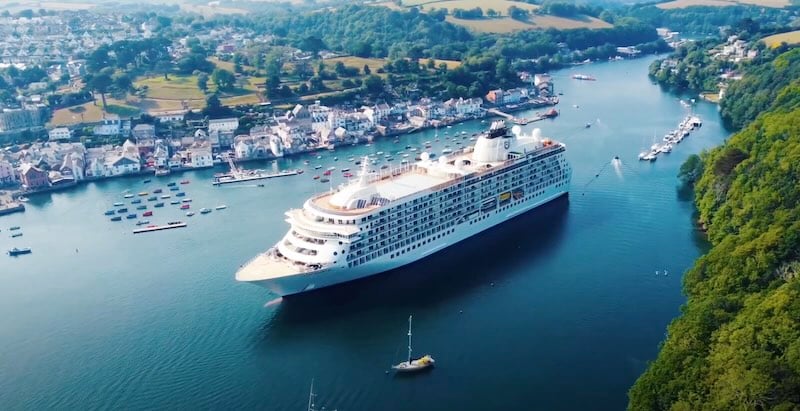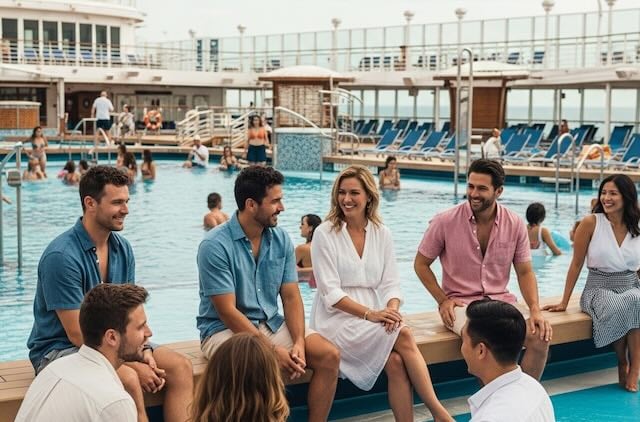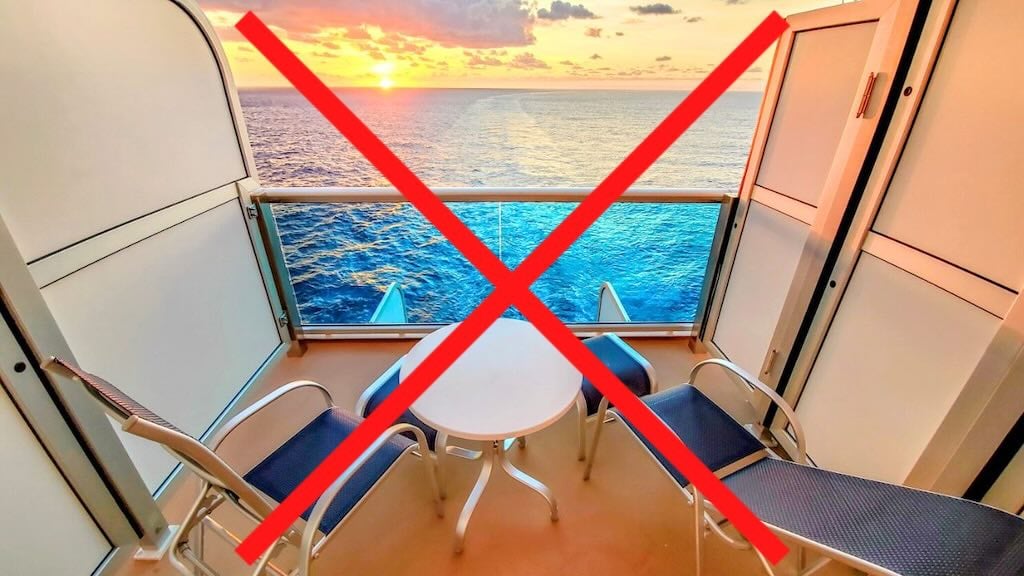Titanic vs modern cruise ships is more than a size comparison — it’s a story of how cruising has transformed from a luxury ocean crossing into a floating vacation empire. Back in 1912, Titanic represented the height of engineering and elegance. Today, cruise ships are so massive they resemble entire cities at sea, packed with waterparks, Broadway shows, and enough restaurants to keep you busy for weeks.
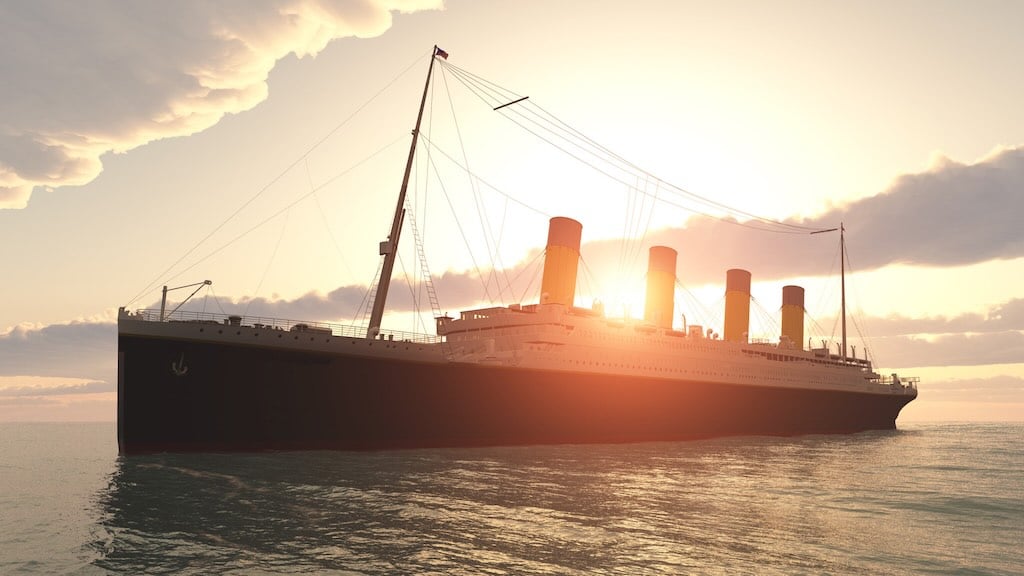
Before we dive into the numbers, cabins, and safety features, let’s set the stage: Titanic was once the benchmark for ocean travel, yet in today’s cruise world she would barely rank as mid-sized. The contrast isn’t just surprising — it’s jaw-dropping.
Table of Contents
Titanic vs Modern Cruise Ships
Titanic vs modern cruise ships is the ultimate then‑and‑now comparison. In 1912, Titanic symbolized peak luxury and engineering for an ocean crossing. Today’s vessels feel like floating cities, with neighborhoods, water parks, and Broadway‑caliber shows that would have stunned even first‑class passengers.

If you’ve ever asked how the classic liner stacks up against today’s mega‑ships, you’re in the right place. We’ll compare size, capacity, cabins, dining, entertainment, safety, and cost in plain English, with real‑world examples and clear takeaways. Expect a few surprises, because what once redefined travel would likely be considered mid‑sized today.
For deeper ship‑to‑ship breakdowns as you read, check out my detailed modern matchup of Star of the Seas vs Titanic. And when we get to the big‑ship face‑offs, I’ll point you to my expanded comparisons like Symphony of the Seas vs Titanic.
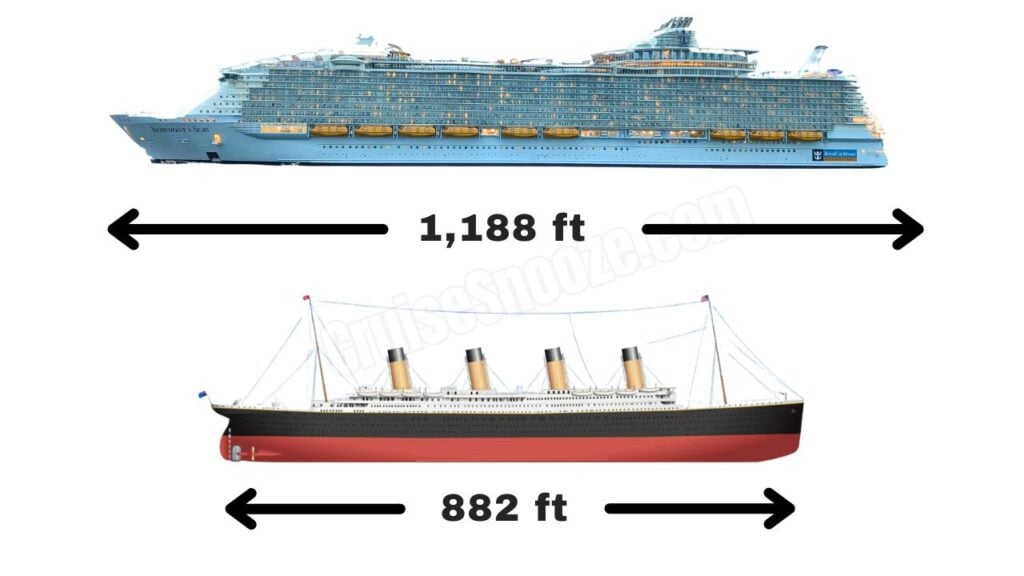
By the end, you’ll know exactly where Titanic truly fits in today’s cruise landscape, what has changed, and what surprisingly hasn’t — plus how to use these insights to plan a smarter, more enjoyable cruise.
Titanic’s Place in History
When Titanic launched in 1912, she wasn’t just another ocean liner. She was a symbol of innovation, elegance, and national pride. At nearly 900 feet long and weighing over 46,000 gross tons, Titanic was the largest ship in the world at the time, a floating palace designed to carry the elite across the Atlantic in unmatched luxury.
But it’s important to remember: Titanic wasn’t technically a “cruise ship.” She was a passenger liner, built to transport people and mail between Europe and North America. That said, her amenities — from gourmet restaurants to a swimming pool and Turkish baths — set the standard for what would later define modern cruising.
For those who want to experience Titanic’s history today, there are still ways to step back in time. Incredible attractions like the Titanic Belfast museum and replicas in the United States allow travelers to walk through exhibits that bring the ship to life. I cover them in detail in my guide to the 10 Best Titanic Museums.
Titanic’s legacy continues to loom large over modern cruising. She represents both the ambition and tragedy of early ocean travel, and comparing her to today’s mega-ships shows just how much has changed in a little over 100 years.
Size and Gross Tonnage Comparisons
When it comes to Titanic vs modern cruise ships, size is the first shocker. At the time of her launch, Titanic was hailed as the largest ship in the world. Measuring 882 feet long, 92 feet wide, and 46,328 gross tons, she was a true giant of her era.
But compared to today’s mega-ships, those numbers look small. Modern vessels like Royal Caribbean’s Icon Class are in an entirely different league:
| Ship | Gross Tonnage | Length | Width | Passenger Capacity |
|---|---|---|---|---|
| Titanic (1912) | 46,328 GT | 882 ft | 92 ft | 2,435 passengers |
| Icon of the Seas (2024) | 250,800 GT | 1,198 ft | 210+ ft | 7,600 passengers |
| Symphony of the Seas | 228,081 GT | 1,184 ft | 215 ft | 6,680 passengers |
| Star of the Seas (2025) | 248,663 GT | 1,198 ft | 159 ft | 5,610 passengers |
That’s over 5 times the gross tonnage and nearly triple the passengers. In fact, Titanic would be considered a mid-sized ship today — comparable to luxury liners or older vessels like Cunard’s Queen Elizabeth.
For a closer look, I’ve written entire ship-to-ship guides:
Each of those breaks down deck counts, passenger layouts, and what the numbers actually mean once you’re onboard.
The takeaway? Titanic was enormous for 1912, but today’s ships have completely redefined what “big” means. Modern design prioritizes not just length, but also width, height, and interior volume — creating space for sprawling neighborhoods, waterparks, and dozens of restaurants. Titanic, for all her grandeur, simply can’t compete with that scale.
Passenger Capacity Then vs Now
Another key difference in Titanic vs modern cruise ships is how many people each ship could carry.
- Titanic (1912):
- 2,435 passengers
- 892 crew
- Total: 3,327 people
That was groundbreaking at the time, but today it feels small. Modern mega-ships routinely hold more than double or triple that number. For example:
- Icon of the Seas (2024):
- 7,600 passengers
- 2,350 crew
- Total: nearly 10,000 people
That’s essentially a floating small city, complete with everything from waterparks to Central Park-style neighborhoods.
It’s also not just about raw numbers. Titanic offered about 19 gross tons per passenger, while Icon of the Seas offers closer to 34 gross tons per passenger. That means more personal space, more venues to explore, and fewer bottlenecks on board.
Interestingly, Titanic actually had a better crew-to-passenger ratio: one crew member for every 2.7 passengers. On modern mega-ships, the ratio is often closer to 1 crew per 3.2 passengers. So while modern ships are bigger, Titanic guests may have enjoyed slightly more attentive service (at least in first class).
Want a deeper look at Titanic’s haunting story beyond the numbers? I’ve got a full breakdown of where the Titanic sank — including exact location, depth, and chilling survival facts.
Cabins and Class System vs Today’s Staterooms
One of the biggest contrasts in Titanic vs modern cruise ships is how cabins were designed and who got access to what.
Titanic’s Cabins: A Strict Class Divide
- First Class: Titanic’s elite stayed in suites modeled after the Ritz Hotel in London, decorated in Georgian, Italian Renaissance, and Jacobean styles. Some even had private promenades and servant quarters.
- Second Class: Comfortable but simple, often with bunk beds and communal restrooms. Still considered above average compared to most liners of the time.
- Third Class: Families and immigrants were packed into shared cabins, sometimes with 10 people to a room and just two bathrooms for over 700 passengers.
Luxury on Titanic came at a cost: if you weren’t in first class, you faced real restrictions on space, comfort, and even which decks you could access.
Modern Staterooms: Choice for Everyone
Today’s cruise ships have eliminated the rigid class divide. Instead, guests choose from a wide range of staterooms and suites, from affordable interior cabins to lavish penthouses with private pools. Even the smallest interior cabins today include:
- A private bathroom (something most Titanic guests didn’t have)
- Climate control
- Daily housekeeping
And if you want to splurge, modern ships offer VIP experiences like The Haven on Norwegian, MSC’s Yacht Club, or Royal Caribbean’s Royal Suites. These give you exclusive pools, restaurants, and concierge service — essentially a modern version of “first class,” without locking other passengers into a lower class system.
For comparison, check out how first-class luxury has evolved in my guide to Symphony of the Seas vs Titanic. You’ll see how today’s “floating palaces” make Titanic’s first-class cabins look almost quaint.
Dining: Titanic’s Menus vs Modern Cruise Variety
Food is another major contrast in Titanic vs modern cruise ships. Dining on Titanic was elegant and formal, but options were limited compared to the endless variety at sea today.
Dining on Titanic
Titanic offered four main venues:
- À la Carte Restaurant (exclusive for first-class, and one of the first “for-a-fee” dining options on a ship)
- First-Class Dining Saloon (the grandest of the dining rooms, with multi-course French-inspired meals)
- Café Parisien & Verandah Café (casual spaces modeled after fashionable European cafés)
- Second and Third-Class Dining Rooms (simpler, hearty meals with fixed menus)
First-class passengers enjoyed extravagant menus with items like oysters, filet mignon, foie gras, and peaches in chartreuse jelly. By contrast, third-class passengers were offered plain fare like stews, bread, and porridge.
Dining on Modern Cruise Ships
Modern cruise ships are foodie paradises. Even mid-sized ships often feature a dozen venues, and mega-ships like Royal Caribbean’s Symphony of the Seas boast 20+ dining options ranging from sushi bars to steakhouse grills. Specialty dining, buffets, grab-and-go venues, and room service (available 24/7) have completely transformed the cruise dining experience.
Many lines also offer themed dining events, cooking classes, and plant-based menus to meet today’s traveler expectations. Whether you’re gluten-free, vegan, or just craving late-night pizza, there’s a venue for you.
For a striking side-by-side, check my Harmony of the Seas vs Titanic article — you’ll see how modern ships turned dining into a core attraction, not just a necessity.
Entertainment: From Turkish Baths to Waterslides
If there’s one area where Titanic vs modern cruise ships feels like two different worlds, it’s entertainment.
Entertainment on Titanic
In 1912, “fun at sea” meant refined, quiet activities. Passengers passed time with:
- Reading and writing rooms
- A squash court
- Gentle deck games like shuffleboard and quoits
- A small gym with quirky machines (including electric camels and horses!)
- A single swimming pool
- Turkish baths, saunas, and massage rooms
- Live music from the ship’s orchestra
Entertainment was designed to be class-appropriate. First-class passengers enjoyed lounges and smoking rooms with elegant décor, while third-class passengers had their own shared social spaces with music and dancing.
Entertainment on Modern Cruise Ships
Modern cruise ships are floating resorts, packed with attractions that would have been unimaginable to Titanic’s designers. Today’s ships include:
- Multiple pools and waterparks with giant waterslides
- Broadway-style theaters and ice-skating shows
- Rock-climbing walls, zip lines, and surf simulators
- Casinos, karaoke lounges, and comedy clubs
- VR arcades and escape rooms
- Live music across dozens of bars and lounges
For example, Royal Caribbean’s Icon of the Seas features seven pools, six waterslides, laser tag, miniature golf, and even an AquaTheater for high-diving shows.
The difference is clear: Titanic offered leisure and elegance, while modern ships deliver high-energy, resort-style fun designed to entertain families, couples, and thrill-seekers alike.
If you want to see just how far cruising has evolved, my full guide on Star of the Seas vs Titanic breaks down not just the numbers, but the lifestyle differences that make today’s ships feel like mini-cities.
Safety Then vs Now: Lifeboats, Drills, and Regulations
Safety is one of the most haunting contrasts in Titanic vs modern cruise ships. The tragedy of 1912 was caused in part by a shocking lack of lifeboats and an absence of rigorous safety procedures.
Safety on Titanic
- Titanic carried 20 lifeboats, enough for just 1,178 people — far fewer than the 2,435 passengers and 892 crew on board.
- Lifeboat drills were minimal, and many passengers had no idea where to go in an emergency.
- Communication technology was primitive. While Titanic had a Marconi wireless system, distress signals were inconsistent and help arrived too late.
When Titanic struck the iceberg, survival came down to luck, class, and timing. In freezing waters, hypothermia set in within minutes. I detail the chilling facts, including water temperature and survival rates, in my article on where the Titanic sank.
Safety on Modern Cruise Ships
Today’s ships operate under SOLAS (Safety of Life at Sea) conventions, created as a direct result of Titanic. Modern safety includes:
- Enough lifeboats and rafts for every single passenger and crew member, plus extra capacity.
- Mandatory muster drills before sailing, ensuring all guests know evacuation procedures.
- High-tech navigation, radar, and satellite systems to detect hazards early.
- Advanced fire-suppression systems, watertight compartmentalization, and evacuation slides.
For example, Royal Caribbean’s Icon of the Seas has 17 massive lifeboats, each holding 450 passengers, plus inflatable evacuation rafts for crew. Safety drills are efficient, standardized, and legally required before a ship can leave port.
And while Titanic will never be raised from the depths due to extreme technical and ethical challenges, I’ve covered the full story in Will the Titanic Ever Be Brought to the Surface?. It shows just how the ship’s legacy still shapes safety conversations today.
Titanic’s Cost to Build vs Mega-Ships Today
When comparing Titanic vs modern cruise ships, the price tag tells an equally shocking story.
Titanic’s Cost in 1912
- Titanic cost about $7.5 million to build in 1912.
- Adjusted for inflation, that’s roughly $400 million in today’s dollars.
- At the time, it was one of the most expensive engineering projects in the world.
For perspective, Titanic’s designers prioritized elegance — wood-paneled lounges, ornate staircases, and intricate details — but technology and safety equipment received less investment.
Modern Cruise Ship Costs
By comparison, modern cruise ships cost several billions:
- Icon of the Seas (2024): estimated at $2 billion
- Symphony of the Seas (2018): around $1.35 billion
- MSC World Europa (2022): about $1.25 billion
That’s 3–5 times the inflation-adjusted cost of Titanic. Much of this goes into advanced safety systems, fuel efficiency, entertainment infrastructure, and technology. Features like robotic bartenders, high-speed Wi-Fi, and entire neighborhoods at sea don’t come cheap.
The Real Takeaway
Titanic’s cost reflected her role as a luxury ocean liner — grand, but still limited in purpose. Modern mega-ships are floating resorts, requiring investments that rival the GDP of small countries.
When you step onboard today’s ships, you’re not just boarding a vessel; you’re stepping into a multi-billion-dollar marvel of engineering and entertainment.
Titanic vs Icon of the Seas: The Ultimate Face-Off
When it comes to Titanic vs modern cruise ships, no comparison is more jaw-dropping than Titanic vs Icon of the Seas. These two ships represent the pinnacle of their eras — but the differences are staggering.
Size and Scale
- Titanic (1912): 46,328 GT, 882 ft long, 92 ft wide, 9 decks
- Icon of the Seas (2024): 250,800 GT, 1,198 ft long, 210 ft wide, 20 decks
➡️ Winner: Icon of the Seas — more than 5 times Titanic’s size
Passenger Capacity
- Titanic: 2,435 passengers, 892 crew (3,327 total)
- Icon of the Seas: 7,600 passengers, 2,350 crew (9,950 total)
➡️ Winner: Icon of the Seas — over triple the number of people onboard
Entertainment
- Titanic: Squash court, Turkish baths, reading rooms, live orchestra, one swimming pool
- Icon of the Seas: 7 pools, 6 waterslides, AquaTheater, ice rink, laser tag, surf simulator, casino, Broadway shows, VR arcades
➡️ Winner: Icon of the Seas — essentially a theme park at sea
Dining
- Titanic: 4 venues (First-Class Saloon, À la Carte Restaurant, Café Parisien, Verandah Café)
- Icon of the Seas: Over 40 restaurants, bars, and lounges with global cuisine
➡️ Winner: Icon of the Seas — unmatched variety and accessibility
Safety
- Titanic: 20 lifeboats for 1,178 people, limited drills
- Icon of the Seas: 17 lifeboats (450 capacity each), plus inflatable rafts, strict SOLAS compliance, mandatory muster drills
➡️ Winner: Icon of the Seas — modern safety regulations leave no comparison
The Verdict
Titanic was revolutionary for 1912, but next to Icon of the Seas she looks like a grand but modest liner. Where Titanic offered luxury for the elite, Icon delivers resort-style fun for nearly 10,000 people at once.
For readers who want even more detail, I break this down further in my focused guide on Star of the Seas vs Titanic, which shows how Titanic measures against the newest ships in the same Icon class.
Similar-Sized Ships to Titanic Sailing Today
It’s easy to assume that Titanic would be dwarfed by every ship on the ocean today. While that’s true for mega-ships like Icon of the Seas, there are still vessels sailing right now that are comparable in size, length, or capacity to Titanic.
Titanic’s Stats Recap
- Gross Tonnage: 46,328 GT
- Length: 882 feet
- Passenger Capacity: 2,435 (plus 892 crew)
Modern Ships of Similar Size
| Modern Ship | Cruise Line | Gross Tonnage | Length | Passenger Capacity |
|---|---|---|---|---|
| Seven Seas Mariner | Regent Seven Seas | 48,075 GT | 709 ft | 700 guests |
| Queen Elizabeth | Cunard | 90,900 GT | 964 ft | 2,547 guests |
| Norwegian Spirit | Norwegian Cruise Line | 75,338 GT | 879 ft | 2,018 guests |
| Silver Shadow | Silversea | 28,258 GT | 610 ft | 382 guests |
| Empress (ex-Royal Caribbean) | Cordelia Cruises | 48,563 GT | 692 ft | 1,840 guests |
What This Means
- By gross tonnage, Titanic sits closest to mid-sized luxury ships like Seven Seas Mariner.
- By length, Titanic matches ships like Norwegian Spirit and the retired Majesty of the Seas almost exactly.
- By capacity, Titanic is still on par with many mid-market ships carrying around 2,000–2,500 passengers.
So while Titanic would look tiny next to Oasis or Icon class ships, she wouldn’t be completely out of place among smaller luxury or boutique cruise ships. In fact, some modern vessels — like Silversea’s Silver Shadow — are even smaller, designed to focus on luxury over scale.
This proves that Titanic wouldn’t just be a historical relic if she sailed today. She’d fall neatly into the “mid-size luxury” category, offering an intimate experience compared to today’s mega-ships.
Will Titanic Ever Sail Again? (Titanic II Project)
Every few years, the headlines return: “Titanic is being rebuilt!” The project most people think of is Titanic II, launched by Blue Star Line in Australia. The idea is to create a near-identical replica of the original ship, right down to its class system, dining menus, and Edwardian décor.
The Titanic II Plan
- Length: 833 feet (slightly shorter than Titanic)
- Passenger Capacity: 2,435 guests, plus 835 crew
- Decks: 9 passenger decks
- Experience: Guests encouraged to dress in period clothing, with authentic menus and entertainment
The goal is to give travelers a “step back in time” cruise, recreating the atmosphere of 1912.
The Delays
Titanic II was first announced in 2012 with a planned 2016 launch. Delays, cost issues, and the pandemic pushed things back again and again. As of 2025, the ship is still “in development,” with a hopeful launch window in the late 2020s — but many remain skeptical it will ever sail.
Could Titanic Rival Modern Ships Today?
Even if Titanic II launches, it would still be a boutique liner compared to today’s mega-ships. With fewer decks, limited entertainment, and retro design, it’s more of a novelty experience than a competitor to Royal Caribbean or MSC.
For travelers who want to explore Titanic’s story without waiting for Titanic II, the best option today is visiting one of the many Titanic museums around the world. These museums bring the history to life through authentic artifacts, recreations, and exhibits that explain why the ship continues to capture imaginations.
Jim’s Take: What Titanic Teaches Us About Cruising
After spending so much time comparing Titanic vs modern cruise ships, one thing is crystal clear: cruising has come a long way. Titanic will always be remembered as a symbol of luxury and tragedy, but she was also a turning point in maritime history. Without her story, we wouldn’t have the safety standards, innovations, and cruise experiences we enjoy today.
What fascinates me most is how the heart of cruising hasn’t changed. People still step aboard ships to escape daily life, to be wowed by food, entertainment, and the feeling of being carried across the ocean. The difference is that today’s ships can deliver that dream to ten times more people at once, with more comfort and safety than Titanic’s builders could have imagined.
As a cruiser myself, I think Titanic reminds us of two things:
- Safety first — today’s mandatory drills, lifeboats, and regulations exist because of what happened in 1912.
- Cruising is about experiences, not just size — while mega-ships like Icon of the Seas grab headlines, smaller ships still deliver incredible journeys, just like Titanic once did.
If this history excites you as much as it does me, you’ll love diving deeper into my guides on where the Titanic sank and whether the Titanic could ever be raised. And if you’re planning your own adventure at sea, don’t miss my Ultimate Cruise Packing List — because being prepared is one lesson you don’t want to learn the hard way.
